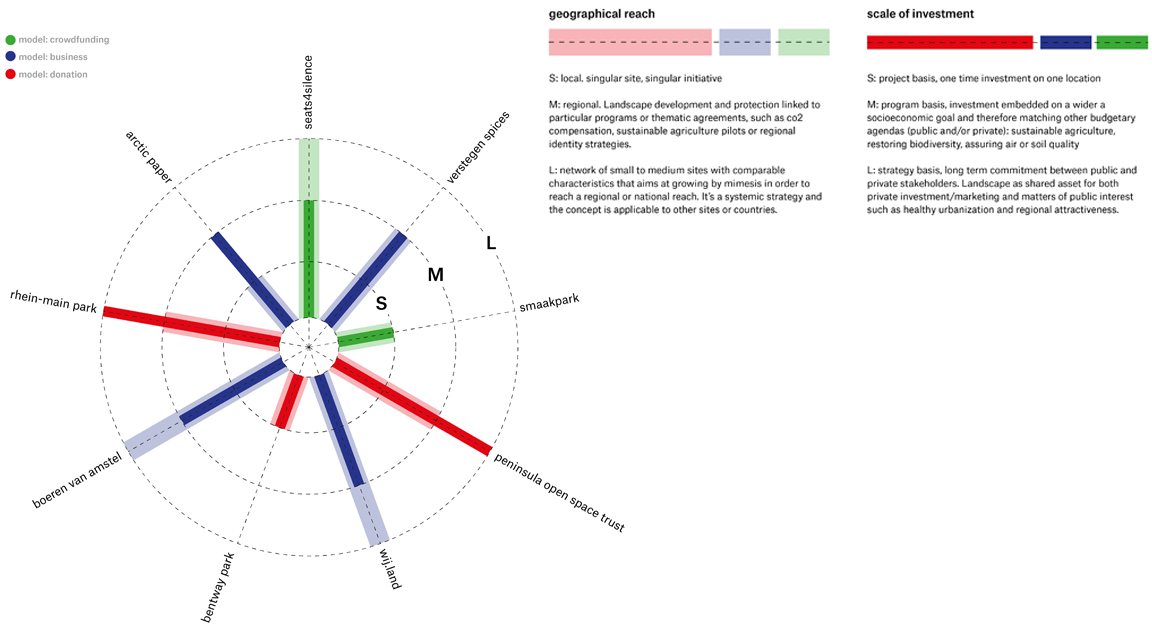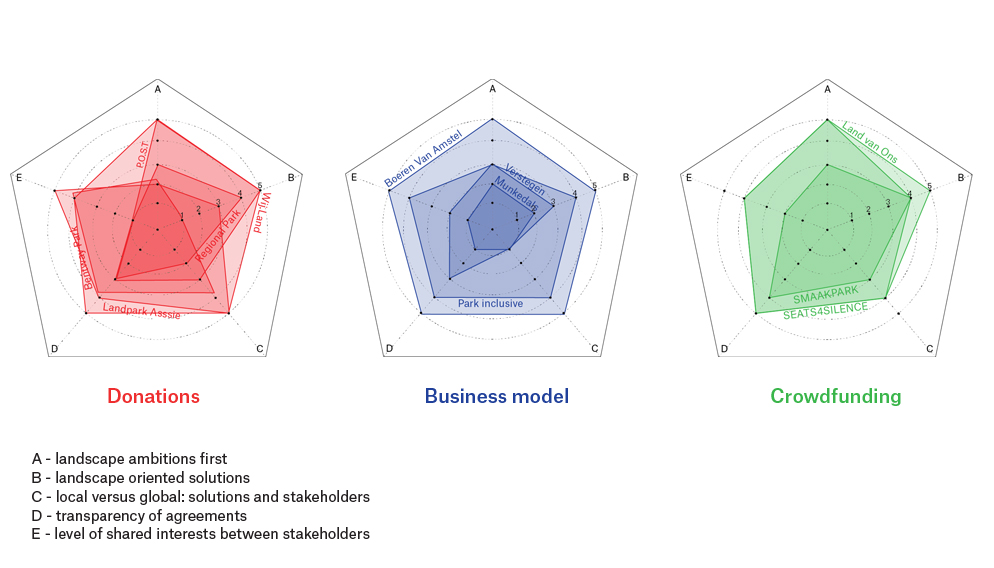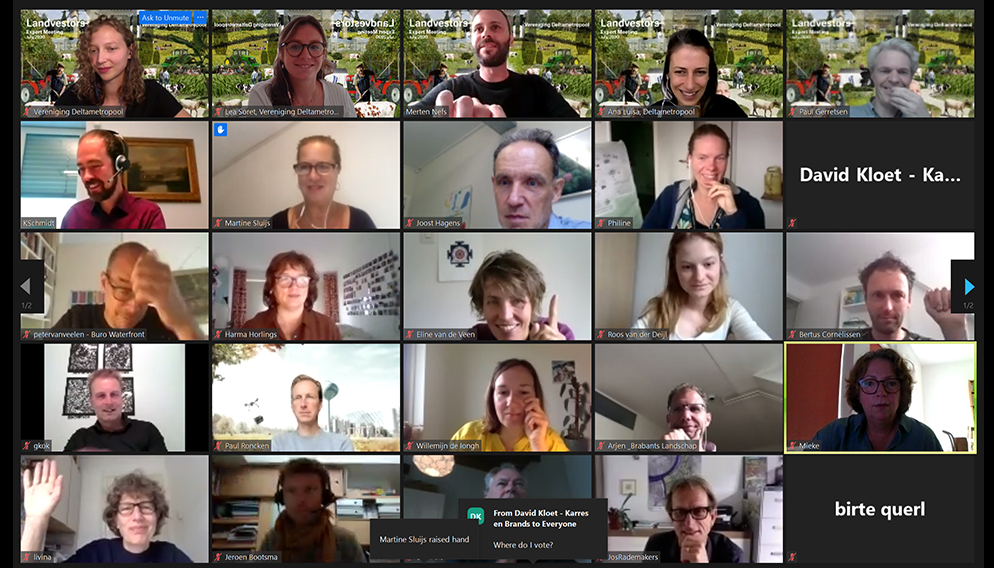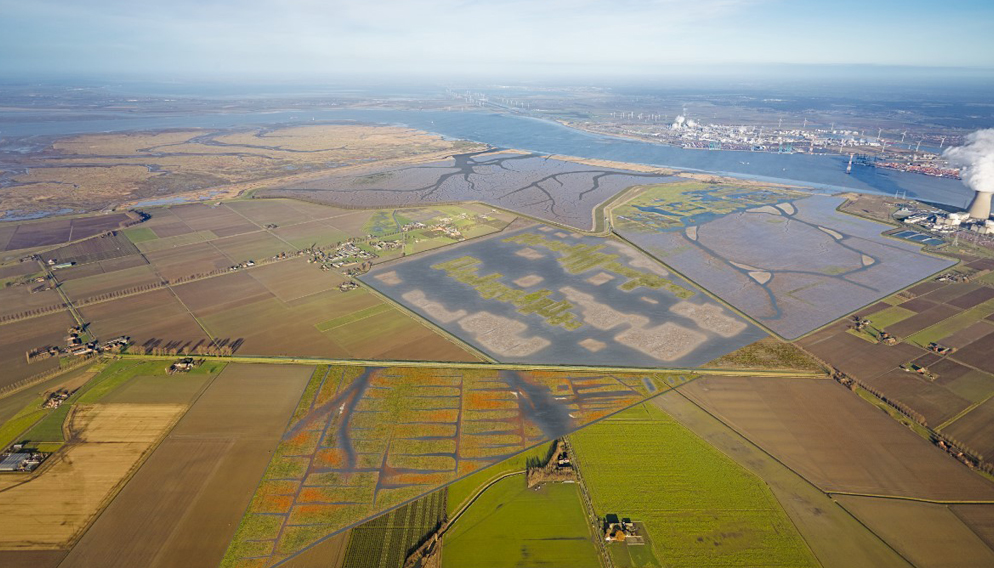Landvestors
How citizens and companies (could) invest in our landscapes
05 oktober 2020
Increasingly, governments come to the conclusion they cannot bear the financial burden of landscape development and maintenance by themselves. At the same time, private landscape initiatives by companies and citizen collectives are mushrooming in many places. Welcome to the age of Landvestors.
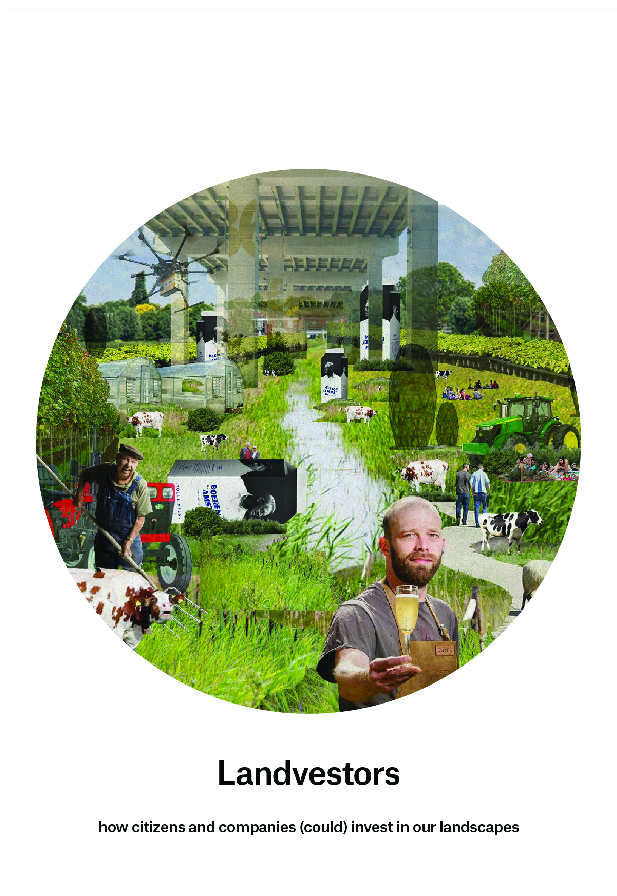 Landvestors, October 2020.
Landvestors, October 2020.
Learning from best practices
This is a time of growing interests and ambitions regarding the Dutch landscape, also when it comes to Dutch politics and planning. Apart from visions and designs, these ambitions also require funds. Investing in the landscape is high on the agenda because of climate change, preservation of cultural history, the stimulation of healthy living and a good economic climate establishment.
Dutch landscape initiatives, public or private, can learn from each other’s financing practice as well as from good examples in other countries. Despite the tradition of privately funded estates in the 17th century, the Netherlands is not very experienced when it comes to contemporary ways of private financing of landscape.Exploring the crossover of landscape and economy, and sharing experiences have been the motivations for our program ‘Landscape as Settlement Condition’, including publications such as Blind Spot, a lively Community of Practice (CoP) and events such as the Landscape Triennial (more information on www.deltametropool.nl).
Donation, crowdfunding or business model
With financial support by the Creative Industries Fund, the Landvestors project realizes a quickscan of emerging forms of non-government landscape financing. To promote crossovers between spatial / landscape design and the economic and financial disciplines, we illustrate lessons learned from foreign and Dutch practices, and discuss these with landscape and financial professionals. Which forms of financing are relevant for the Dutch context? How do the funding mechanisms work and how can Dutch stakeholders start to use them? And how does our relationship with the landscape change, when we pay for it privately instead of collectively?
The 12 practices are divided in three categories: donation, crowdfunding and business model. For each, the financial model is sketched, a map is drawn and key information is gathered. Lessons learned, reflections on the potential of each case to be scaled up in the Dutch context, as well as the results of the expertmeeting (July 2020) are combined in this compact handbook for landvestors.


